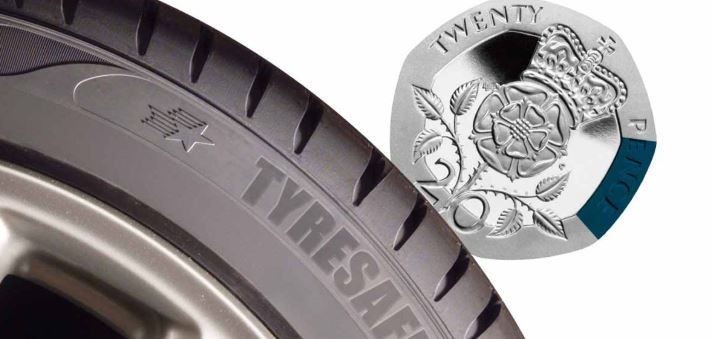The importance of checking your tyres
In 2015, almost one-third of all accidents which involved vehicles were due to underinflated, defective or illegal tyres. That’s a huge proportion of collision which is entirely preventable if the proper safety procedures were carried out. Even if you aren’t involved in a collision, the police have the powers to stop and check your entire vehicle for anything which goes against the law. If they notice your tyres are below the legal tread depth, they can fine you up to £2500 and give three penalty points per illegal tyre.
They play a critical role in the handling of your vehicle in steering and braking, so the safety of the entire vehicle. Therefore it’s incredibly important that you are aware of how to check your tyres for any defects or general wear and tear which will occur over the lifetime of the tyre.
Checking tyres tread depth
Make regular weekly checks across all four tyres. Signs of damage include bulging, cuts and tears in the tyre wall. If you spot anything and you’re not certain whether it’s legal or not, take the car to the nearest garage and ask them to investigate.
Minimum Legal Tread Depth
All car tyres are required to have a minimum tread depth of 1.6mm across the central 75% of the tread around the complete circumference of the tyre. If your tread depth is between 1.6 and 3mm, it’s best to start to considering ordering new tyres for your car. The easiest method of checking this is using a tread depth gauge. These can be purchased online for as little as £5 and could be a potential life-saving habit to regularly check. The device itself can be kept in your boot or glove box due to its small size. When checking, it’s best to check in three separate locations across the width of the tyre. This is because tyres don’t often wear evenly, and then 1.6mm rule applies across 75% of the tyre.
Check Tyres using the Tread Wear Indicators
Alternatively, many tyres have tread wear indicators which can be found between the groves of the tread. Be wary though, these aren’t as accurate as using a tread depth gauge. Yet they’ll give you a rough indication of when to replace the tyres.
Checking Tyres with a 20 Pence Coin
Another quick and easy method of checking your tyre tread depth is the 20p rule. Place a 20p coin into the lowest tread depth of your tyres. If the outer rim isn’t visible around the edge of the coin, then your tyre is safe and has a minimum of 3mm tread depth. On the other hand, if you can see the rim of the coin, then your tire tread depth is less than 3mm and needs to be checked professionally.
Tyre and Safety Experts Recommendations
Tyre and safety experts believe the 1.6mm legal minimum isn’t nearly enough to guarantee safety. The recommended minimum tread depth is 3mm, below this you should consider tyre replacement. Tests by UK technical organisation MIRA found that, once tyres are below 3mm, stopping distances increase dramatically. For example, the difference in wet braking distance between a tyre worn to 3mm and one worn to 1.6mm can be as much as 44% increase. This means at 70mph, stopping distances increase from 96m to 138m. Simply due to the depth of your tyres.
Check Tyre Pressure
Underinflated tyres can often lead to overheating, poor handling of the vehicle and in the worst case scenario- a blowout. Therefore, it’s vital that you regularly check that your tyres are inflated to the correct pressure. If you don’t know the value for which they should be at, your vehicle handbook should have these details. Alternatively, a google search with your cars make and model is likely to yield some results.
Over or underinflated tyres can cause uneven wear on the tyres. Over-inflated tyres will cause the centre of the tyres to wear away quickly. Having the correct amount of pressure by giving the driver more control and make the tyres last longer.
Dangers of Worn Tyres
Worn tyres are especially dangerous in the rainy weather conditions because a tyre’s tread helps move water away from the contact patch between tyre and road. If there’s less tread depth, less water can be shifted, increasing the risk of aquaplaning and losing grip. Furthermore, more water between the tyres and the road decreases your handling of the vehicle and can make steering far more difficult.
In conclusion, checking your tyres regularly is one of the most important checks you need to carry out on your car. Our advice is checking at least once every two weeks and before any long journeys. This is because of how vital they are to the overall function of your car and their importance in braking, steering, and the overall control of your vehicle.

